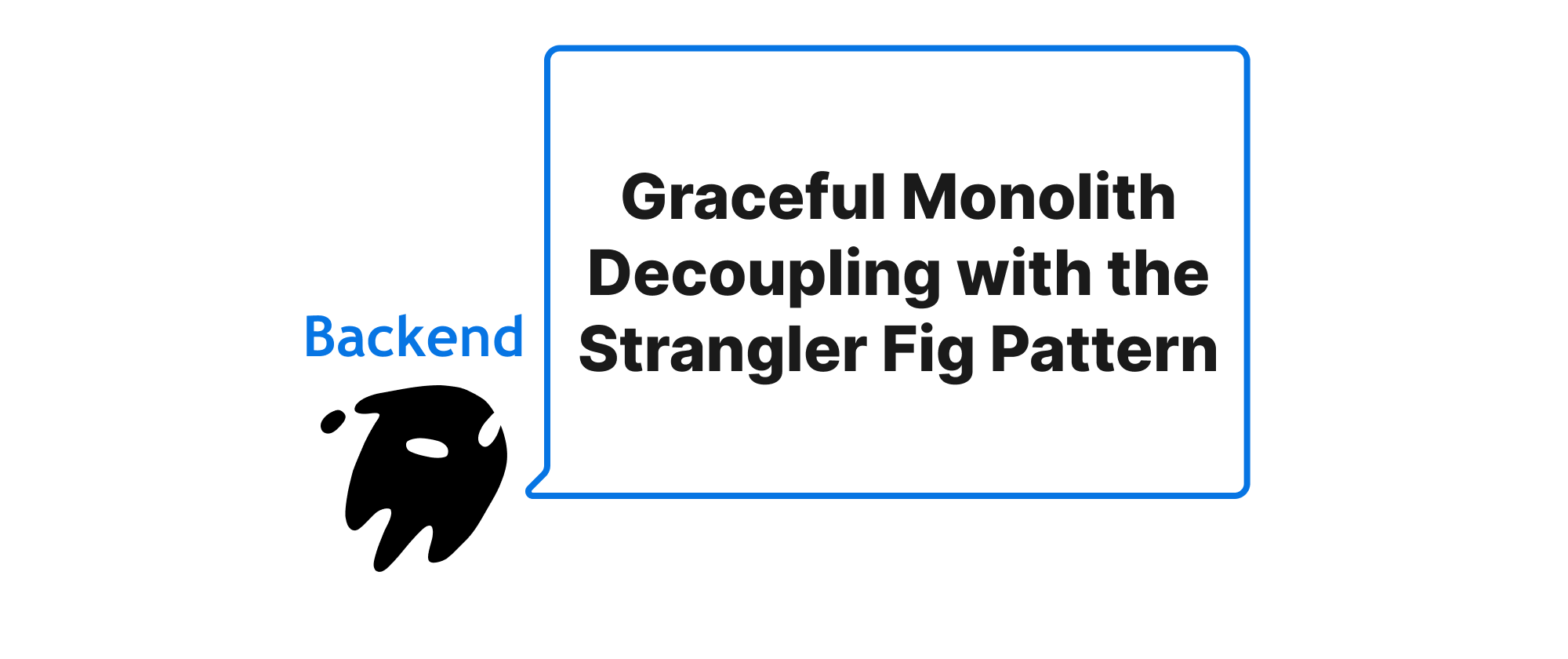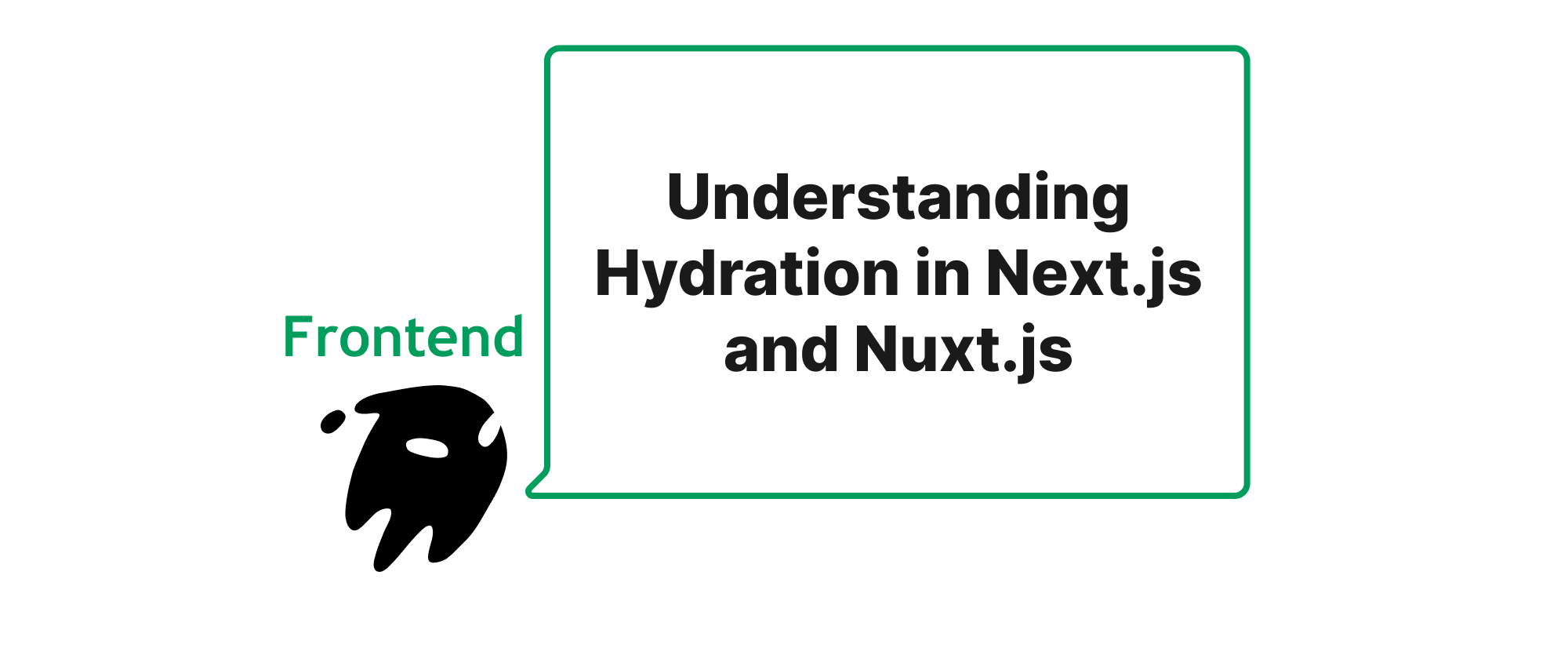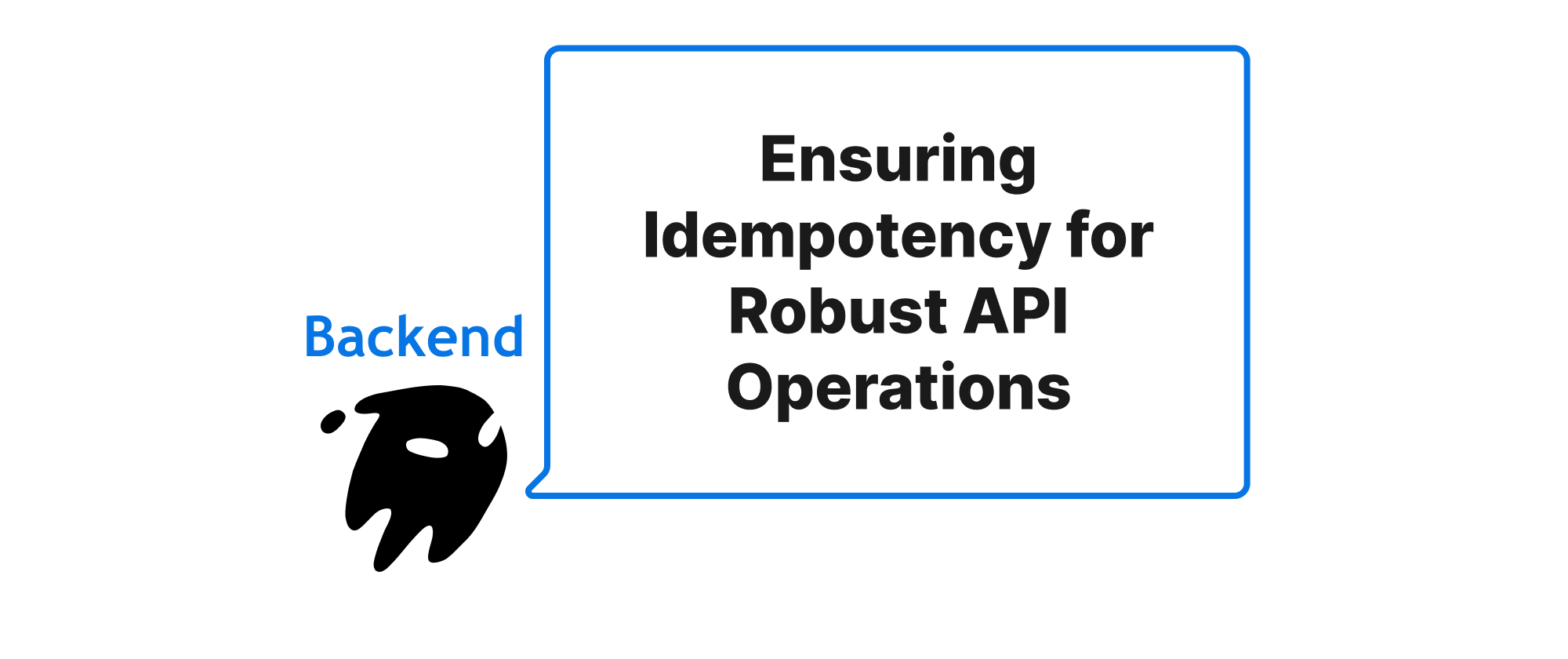Graceful Monolith Decoupling with the Strangler Fig Pattern
Olivia Novak
Dev Intern · Leapcell

Introduction
In the fast-evolving landscape of software development, monolithic applications, once the staple of enterprise architecture, often become bottlenecks. Their inherent tightly coupled nature can hinder agility, scalability, and maintainability. As organizations strive for greater flexibility and faster delivery cycles, the allure of microservices architectures grows stronger. However, directly plunging into a complete rewrite from a monolith to microservices is a perilous endeavor, fraught with risks, high costs, and potential project failure. This is where the Strangler Fig pattern emerges as a pragmatic and effective strategy. It offers a structured, incremental approach to decompose a monolithic application into a suite of independently deployable services, minimizing disruption and risk. This article will delve into the Strangler Fig pattern, exploring how backend teams can leverage it to safely and successfully transition from monolithic giants to agile microservices ecosystems.
Body
Before we dive deeper, let's establish a clear understanding of some key terms that are central to our discussion:
- Monolithic Application: A software application designed as a single, self-contained unit, where all components are tightly coupled and run within a single process.
- Microservices Architecture: An architectural style that structures an application as a collection of loosely coupled, independently deployable services, each responsible for a specific business capability.
- Strangler Fig Pattern: An incremental refactoring technique where new system functionality is built as microservices alongside the existing monolith. Over time, calls to the monolith for specific functionalities are redirected to the new microservices, effectively "strangling" the old monolith until it can be fully decommissioned. This pattern is inspired by the strangler fig tree, which grows around a host tree, eventually replacing it.
- Anti-Corruption Layer (ACL): A protective layer that translates communications between a legacy system (the monolith) and a new system (microservice) to ensure that the new system's domain model remains untainted by the legacy system's complexities or inconsistencies.
The Principle of Strangler Fig
The core principle behind the Strangler Fig pattern is gradual replacement. Instead of a "big bang" rewrite, which involves abandoning the existing system and building a new one from scratch, the Strangler Fig pattern advocates for building new functionality or porting existing parts as microservices alongside the monolith. Traffic is then diverted, incrementally, from the monolith to these new services.
Imagine a monolithic e-commerce application handling user authentication, product catalog, order processing, and payment. Using the Strangler Fig pattern, you wouldn't rewrite the entire system at once. Instead, you might identify the "user authentication" module as a good candidate for extraction.
- Identify a Bounded Context: Pinpoint a specific functional area within the monolith that can be naturally isolated and developed as a microservice. Authentication is a common starting point due to its clear boundaries.
- Build the New Service: Develop a new microservice responsible only for user authentication. This service will have its own database, API, and deployment pipeline.
- Implement a Facade/API Gateway: Introduce an API Gateway or a facade layer that sits in front of both the monolith and the new microservice. Initially, all requests might go through the monolith.
- Redirect Traffic: Gradually redirect requests pertaining to the identified functionality (e.g.,
/api/auth/*) from the monolith to the new microservice. This redirection can be done at various layers:- Load Balancer/Reverse Proxy: Configure your load balancer (e.g., Nginx, HAProxy) to route specific URL paths to the new service.
- Application-Level Facade: Within the monolith itself, create a new module that acts as a proxy, calling the new microservice for specific operations. This is often part of the Anti-Corruption Layer.
- Refine and Repeat: As the new service matures and proves stable, more functionality can be extracted. The process is iteratively applied to other bounded contexts (e.g., product catalog, order management) until the monolith is eventually reduced to a minimal core or entirely replaced.
Practical Implementation Example
Let's consider a simple monolithic user management system written in Python with Flask, which we want to refactor using the Strangler Fig pattern.
Original Monolith Structure (Simplified Python/Flask)
# monolith_app.py from flask import Flask, request, jsonify app = Flask(__name__) users_db = { "john.doe": {"password": "password123", "email": "john@example.com"}, "jane.smith": {"password": "securepwd", "email": "jane@example.com"} } @app.route('/users/<username>', methods=['GET']) def get_user(username): user_data = users_db.get(username) if user_data: return jsonify({"username": username, "email": user_data["email"]}), 200 return jsonify({"message": "User not found"}), 404 @app.route('/auth/login', methods=['POST']) def login(): data = request.json username = data.get('username') password = data.get('password') user_data = users_db.get(username) if user_data and user_data['password'] == password: return jsonify({"message": "Login successful", "token": "dummy_jwt_token"}), 200 return jsonify({"message": "Invalid credentials"}), 401 if __name__ == '__main__': app.run(port=5000)
Now, let's extract the login functionality into a separate microservice.
New Authentication Microservice (authentication_service.py)
# authentication_service.py from flask import Flask, request, jsonify auth_app = Flask(__name__) # This microservice would have its own user database, distinct from the monolith's # For demonstration, we'll use a simplified version. auth_users_db = { "john.doe": {"password": "password123"}, "jane.smith": {"password": "securepwd"} } @auth_app.route('/authenticate', methods=['POST']) def authenticate_user(): data = request.json username = data.get('username') password = data.get('password') user_data = auth_users_db.get(username) if user_data and user_data['password'] == password: # In a real scenario, this would generate and return a proper JWT return jsonify({"message": "Authentication successful", "token": f"auth_token_for_{username}"}), 200 return jsonify({"message": "Invalid authentication credentials"}), 401 if __name__ == '__main__': auth_app.run(port=5001) # Run on a different port
Introducing an API Gateway (or Reverse Proxy Configuration)
Instead of modifying the monolith's login endpoint directly, we would introduce an API Gateway (e.g., Nginx, Kong, or even a simple Python Flask proxy) to route traffic.
Nginx Configuration Example (simulating API Gateway)
# nginx.conf relevant snippet http { upstream monolith_backend { server 127.0.0.1:5000; } upstream auth_service_backend { server 127.0.0.1:5001; } server { listen 80; # Route /api/auth/login to the new authentication service location /api/auth/login { proxy_pass http://auth_service_backend/authenticate; proxy_set_header Host $host; proxy_set_header X-Real-IP $remote_addr; proxy_set_header X-Forwarded-For $proxy_add_x_forwarded_for; } # All other /api requests go to the monolith location /api/ { proxy_pass http://monolith_backend/; proxy_set_header Host $host; proxy_set_header X-Real-IP $remote_addr; proxy_set_header X-Forwarded-For $proxy_add_x_forwarded_for; } } }
With this Nginx configuration, any request to http://your-domain/api/auth/login would be directed to the new authentication microservice running on port 5001 (mapped to /authenticate endpoint). All other /api/ requests would still go to the original monolith on port 5000.
Anti-Corruption Layer in Practice
If the new microservice needs to call back into the monolith or vice-versa, an Anti-Corruption Layer (ACL) becomes crucial. For instance, if the authentication service needs user details that are still exclusively in the monolith's database, an ACL could be implemented within the authentication service to fetch this data.
# Inside authentication_service.py's logic or a dedicated client module import requests MONOLITH_BASE_URL = "http://127.0.0.1:5000" def get_user_details_from_monolith(username): """ Anti-Corruption Layer function to fetch user details from the monolith. Translates monolith's data structure into auth service's expected format. """ try: response = requests.get(f"{MONOLITH_BASE_URL}/users/{username}") response.raise_for_status() # Raise an exception for bad status codes monolith_data = response.json() # Translate monolith structure to auth service's domain model # Example: monolith might return 'email', auth_service might only care about 'username' return {"username": monolith_data.get("username"), "email_from_monolith": monolith_data.get("email")} except requests.exceptions.RequestException as e: print(f"Error fetching user from monolith: {e}") return None # Then in authenticate_user: # ... # user_data = auth_users_db.get(username) # if not user_data: # monolith_user_info = get_user_details_from_monolith(username) # if monolith_user_info and monolith_user_info.get("email_from_monolith"): # # Potentially migrate user or just use their details for a one-off login # pass # User found in monolith, process login # ...
This ACL ensures that the authentication microservice doesn't directly consume the monolith's internal data structures, maintaining its independence and clean domain model.
Application Scenarios
The Strangler Fig pattern is particularly effective in scenarios such as:
- Legacy Systems with High Business Value: When a monolith is critical to business operations, a big-bang rewrite is too risky.
- Gradual Modernization: Teams want to adopt new technologies (e.g., new language, framework, database) for specific parts of the system without affecting the entire application.
- Team Autonomy: Enabling different teams to own and develop specific services independently, fostering autonomy and faster iteration.
- Reducing Technical Debt: Systematically addressing areas of high technical debt by replacing them with freshly built services.
Conclusion
The Strangler Fig pattern provides a robust and practical roadmap for safely migrating from monolithic architectures to microservices. By embracing incremental extraction, careful traffic redirection, and strategic use of Anti-Corruption Layers, organizations can minimize risk, preserve business continuity, and gradually evolve their systems towards a more agile and scalable future. This pattern fundamentally champions evolution over revolution, making it a cornerstone strategy for modernizing enterprise applications.


